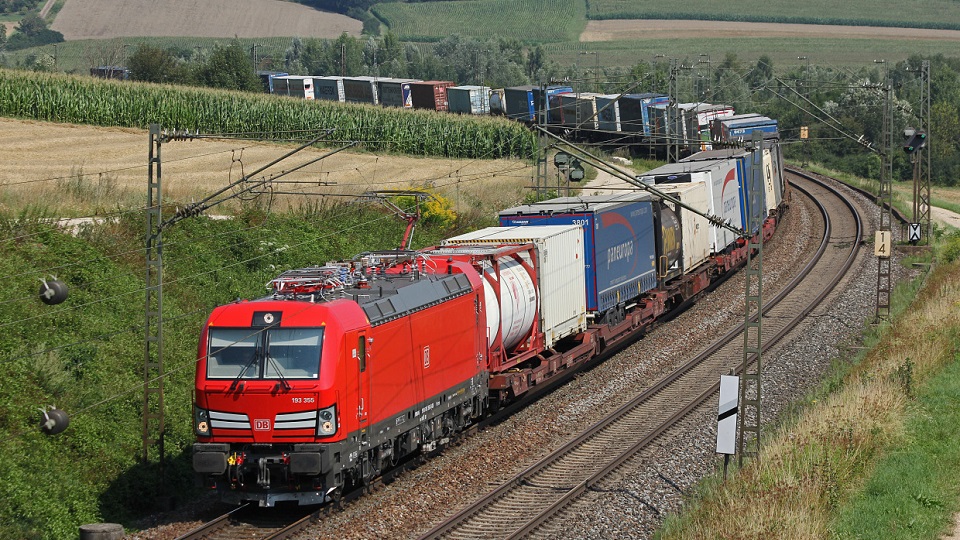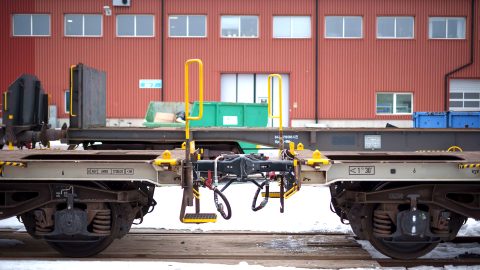How can railways phase out diesel from their operations?

HVO fuel and a future hydrogen combustion engine will play a role in reducing rail emissions. “We can replace old vehicles with new sustainable trains; however, we also need to do something to reduce the carbon footprint of existing vehicles running on diesel”, said Sittipan Reinold, Program Lead Diesel Exit Rail at Deutsche Bahn, during a webinar of sister publication RailTech.com.
Reducing current emissions for existing diesel trains is at the core of DB’s Diesel Exit programme, which was launched this year. “As DB forwarded its climate neutrality goal from 2050 to 2040, this means it’s only 18 years left, which in terms of railway innovation cycles is a very short time”, said Sittipan Reinold.
One of the ways DB wants to reduce the emissions of operations is by switching to HVO fuel, which stands for Hydro-treated Vegetable Oil. “HVO is a biofuel made out of waste and residual and components raw materials. Because it does not have a fossil origin, and green electricity is used for production, the CO2 emissions of the HVO fuel we buy are 90 per cent lower than diesel. Additionally, it has certificates to guarantee it is the greenest HVO and is palm oil-free.”
The main advantage of HVO as a biofuel is that it is a ‘drop-in fuel’. “You can take diesel from the vehicle and put in HVO, and the train is running. There is no need to adopt anything on the train.” DB tested it first in its Advanced TrainLab and started in January with the implementation of the fuel in its operations.
Freight subsidiary DB Cargo took a big step in approving all their diesel engines in Germany for the use of HVO. “Every DB Cargo vehicle is ready to use HVO, and the question is only: how fast can we convert refilling stations?” There are currently just three refilling stations for HVO in Germany, but more are coming.
However, is there enough HVO available to fuel all operations of DB? “In Germany, DB is consuming about 250 million litres of diesel”, says Reinold. The overall HVO production capacity in 2021 reached around 4 billion litres. DB estimates there will be enough green HVO for at least all their operations and other market participants. According to the German company, the amount of HVO with the greenest label is not yet at the level needed for all DB operations, but this will go up with the growing demand and should be sufficient with the gradual conversion of refuelling stations.
The role of hydrogen
While HVO fuel can significantly reduce emissions in the shorter term, the eyes are often on hydrogen to realise fully net-zero emissions in the future, as well as for rail. The current hydrogen drive available for trains – the hydrogen fuel cells – might not be the answer to everything. “For retrofitting a train with a diesel mechanic engine, you would have to electrify the whole powertrain of the car, so we were looking into other possibilities and other technologies for retrofitting our existing trains. We see hydrogen fuel cells mainly as a solution for new trains”, says Reinold.
According to Reinold, there is currently still a technological gap in alternative drives for trains. “For heavy haul traffic, fuel cells have their limitations when it comes to performance. So we were looking into hydrogen combustion engines because you have the same or almost the same performance.” For this reason and for the case of retrofitting, DB is also looking into the possibilities of hydrogen combustion engines, which burn hydrogen in a similar manner as diesel engines burn fuel but without CO2 emissions. These types of engines are, however, still in development. “The main advantage is that you could use the same existing engine, with some modifications. This is less complex than electrifying the whole powertrain, which is necessary for the use of hydrogen fuel cells.”
However, it will take some time before this hydrogen engine is operational for trains. “It would take around 5 or 6 years to have a pilot project, and after that, we can look at implementing it for a larger fleet”, says Reinold. Therefore, the HVO would play an essential role in reducing current emissions because some technological developments still need to be developed further. Also, it is not always economically feasible to invest millions of euros in hydrogen fuel cells or batteries if that vehicle goes out of service in a few years, while HVO can be used in the final years of diesel trains to reduce emissions.
In the railway sector, there is considerable interest in the hydrogen combustion engine, said Frederik Wewetzer, Programme Manager Hydrogen and Fuel Cells at Now GmbH. “However, in Germany, the political strategy is to focus on hydrogen fuel cell technology. Especially for retrofitting, the industry’s interest in hydrogen combustion engines for trains is huge, and we should definitely consider it for retrofitting diesel trains.” 36 per cent of railway operations or 244 million kilometres of the large German network were operated with diesel traction in 2017.
Sustainability of fuel production
In general, the source of the ‘sustainable’ fuel plays a prominent role in the final emissions; also for hydrogen, says Marko Kapetanović, who did a research study to calculate the CO2 emissions of various options of alternative drives for an Arriva railway line in Groningen, the Netherlands.
The trains in Groningen are diesel-electric trains with a hybrid system, so if they were converted to an internal combustion engine running on hydrogen, it would even result in an increase in the greenhouse gas emissions compared to the diesel vehicle if grey hydrogen, produced with natural gas or electrolysis with grey electricity was used.
“The transition to, for example, hydrogen is a relatively fast process that can be achieved in a shorter period, and thus can reduce emissions in the shorter term,” explained Kapetanović. However, the choice of the diesel alternative depends on many factors, and for each railway line, the consideration of taking into account the emissions and feasibility is critical to shift to sustainable operations.
This article originally appeared in our sister publication RailTech.com.
Also read:
-
Hydrogen plant for Felixstowe to fuel freight operations too
-
This company plans to power Polish trains by hydrogen next year
-
Port of Gothenburg applies fossil-free combined transport scheme
You just read one of our premium articles free of charge
Want full access? Take advantage of our exclusive offer






For environment, however, currently, at railways, the by nature “green” device, just a a marginal problem, when compared with off shore, where the dirtiest, the heavy, still is allowed…
Regrettably, as well on shore, currently, mantra “electrification”, by far is not the timely. (Majority does not afford luxury of not caring about “eta”!)
Neither resilent, nor redundant, nor robust…, thus devastatingly low quality, indeed industry of railways, should be most grateful for diesel…